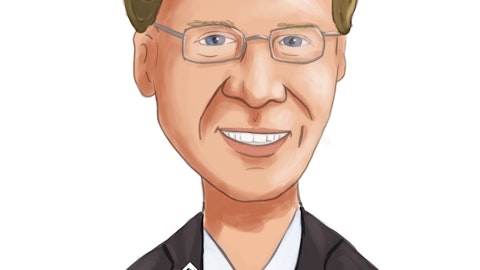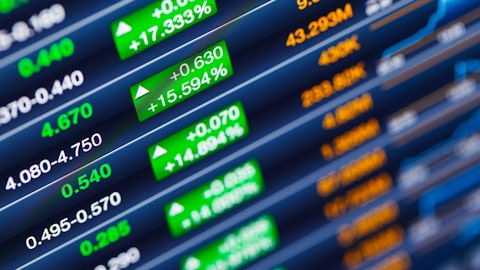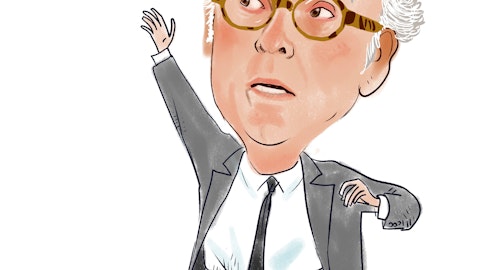There may be, at today’s rate, there may be a slight 10 bp headwind on margin, but it’s really miniscule. I mean, it’s probably plus or minus 10 bps is sort of the nature unless there’s big currency swings, it’s really not going to move the margin that much, frankly. On your first question on normalized cash flows. I mean, look, obviously 2022 was a challenging year from a cash flow perspective because we had 2 things. We had the big delta on what we described as being the non-trade working capital, which really was effectively an accrual made for a bonus payment in 2021, which is a record bonus. We paid out our highest bonus ever on the back of results in 2021 from the accounting perspective. Of course, those payments weren’t made in cash terms until 2022.
So we had a big outflow of cash in 2022, which was accounted for in 2021 profitability. And that’s why we have the big move there. We also had an outflow at the year-end on our net working capital position, which I think was — largely, we described as timing. But the elements that our actual creative business, which tends to be working capital consuming actually grew better than we were expecting. And our media business, which tends to be working capital generative actually was probably — even though the growth was good, it’s growth was slightly less than we expected. And so we had a little bit of an outflow at the year-end. But it’s worth pointing out that we have unlocked that GBP 1.3 billion of working capital benefit over the last 3 years.
So all of which is, of course, in theory, should drop to the bottom line, and that’s what at least in part funding the buyback program, the GBP 1.5 billion that we’ve returned to shareholders over the last 2 years. I think if you were to look at what’s the sort of normalized basis, I mean I think if you define your sort of free cash flow, taking account of your CapEx, your tax, your interest, your earn-outs, your restructuring costs and closing working capital, then we should be normalizing at around GBP 1 billion plus or so against top line of just over GBP 2 billion. So that would be — and certainly, if I look to, say, ’23 as an example, with, if you like, headline EBITDA at GBP 2.1 billion, we’re creating free cash flow of around GBP 800 million.
And if I look at sort of ’24 and ’25 and beyond, you’d see that free cash flow number increasing. It does, of course, reflect a number of items which will move over time. So I would say CapEx was relatively — was lower than expected in ’22. It’s going to be a little bit higher in ’23 at GBP 300 million, but we’ll probably normalize around that level going forward. I think restructuring, we saw GBP 220 million in 2022, exactly in line as we guided. We’ll see GBP 180 million in 2023, as we’ve now guided for this year. And then we’ll see that come off over the subsequent years. So that will be a help to the overall free cash flow. And then in terms of net working capital, I think we largely expect to be flat going forward. We’ve delivered, if you like, the big one-off benefits in 2020 and 2021.
And I think going forward, we’ll continue to make small operational improvements offsetting the outflow as a result of growing the business. And so net-net, overall, I would say, neutral. But that’s — I hope that gives you a little bit of a shape in terms of what we anticipate going forward. Does that answer your question?





